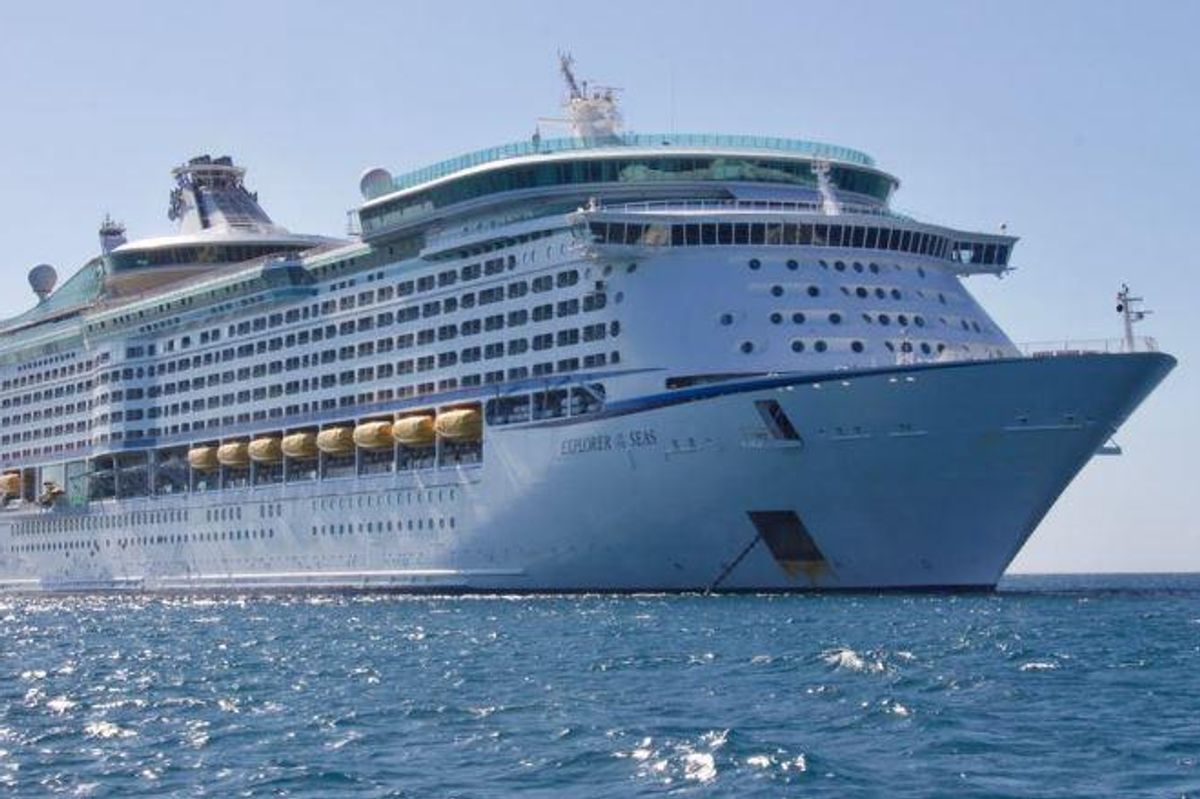A couple in their 50s live permanently on a cruise ship because it's cheaper than a mortgage
They hope to spend around $36,000 a year.

The Emperor of the Seas.
Imagine retiring early and spending the rest of your life on a cruise ship visiting exotic locations, meeting interesting people and eating delectable food. It sounds fantastic, but surely it’s a billionaire’s fantasy, right?
Not according to Angelyn Burk, 53, and her husband Richard. They’re living their best life hopping from ship to ship for around $100 a night, depending on the cruise. "Cruise costs vary quite a bit, our goal is to average about $100 per night, for the couple, or less across and entire calendar year," Richard told Upworthy.
The Burks have called cruise ships their home since May 2021 and have no plans to go back to their lives as landlubbers. Angelyn took her first cruise in 1992 and it changed her goals in life forever.
“Our original plan was to stay in different countries for a month at a time and eventually retire to cruise ships as we got older,” Angelyn told 7 News. But a few years back, Angelyn crunched the numbers and realized they could start much sooner than expected.
“We love to travel and we were searching for a way to continuously travel in our retirement that made financial sense,” she said. They looked into deals they could find through loyalty memberships and then factored in the potential sale price of their home and realized their dream was totally affordable.
The rough math makes sense. If the couple hits their goal of spending $100 per night to live on a cruise ship, that’s $36,500 a year. Currently, the average price of a home in Tukwila, Washington—where the couple has a house—is about $607,000. Let's say you moved there today, put down 20% and financed the rest, the mortgage would cost you around $44,000 a year.
Plus, on a cruise ship, the couple doesn’t have to pay for groceries.
The Burks are able to live their dream because they’ve spent a lifetime being responsible. “We have been frugal all our lives to save and invest in order to achieve our goal,” she says. “We are not into materialistic things but experiences.”
Angelyn says that cruising takes the stress out of travel. “It is leisurely travel without the complications of booking hotels, restaurants, and transportation while staying within our budget,” she told 7 News.
The couple travels lightly with just two suitcases between them and if they need anything, they just buy it on the ship or in the next port.
The one thing to consider before embarking on a never-ending cruise is COVID-19. The coronavirus is easily spread in close quarters and a cruise ship that recently docked in Seattle had 100 people on board who tested positive for the virus. The CDC recommends that people get vaccinated before going on a cruise and that immunocompromised people should consult with their physicians before traveling.
Richard told Upworthy that he believes COVID-19 safety is still very important and has had both his shots and a booster. "I would suggest wearing a mask at all times when out in public no matter whether on a ship, in a movie theater, at a restaurant or even meeting with friends inside or outside," he said.
After leaving their jobs and the mainland behind, the Burks completed a 21-day cruise via the Panama canal. They look forward to a 50-day cruise around the Adriatic Sea, taking in the sights of Europe, as well as a 51-day cruise from Seattle to Sydney, Australia.
The Burks' favorite destinations, no matter how they get there, are Italy, Canada, Iceland and the Bahamas, but their ultimate favorite is Singapore.
Looking to give it all up and go on a permanent vacation just like the Burks? Angelyn has some advice for those wanting to get started.
This article originally appeared on 05.11.22
- Couples saves $27,500 a year by living on a floating home - Upworthy ›
- Family lives on old military tug boat - Upworthy ›
- Woman lives on a cruise ship for free - Upworthy ›
- Man tells Insider how he cruises 300 days a year - Upworthy ›
- The biggest problem with living on a cruise ship - Upworthy ›
- Guys saying living in a resort is cheaper than paying rent - Upworthy ›
- Biggest dangers on a cruise ship - Upworthy ›
- Teen leaves parents behind in Caribbean while on cruise - Upworthy ›
- Couple buys small island because it was cheaper than a house - Upworthy ›
- 28-year-old buys apartment on cruise ship because it's cheaper - Upworthy ›
- How much it costs to live on a cruise for a year with the Virgin Voyages Annual Pass - Upworthy ›
- Couple lives on cruise ships - Upworthy ›
- Man lives on a cruise ship 300 days a year for the same cost as renting in Florida - Upworthy ›
- Man buys apartment on a cruise ship for less than renting on land - Upworthy ›
- Retired couple lives on cruise ships and its surprisingly affordable - Upworthy ›
- Retired couple lives on cruise ships - Upworthy ›
- Student flies to college bi-weekly to save on rent - Upworthy ›
- Retired couple books 51 back-to-back cruises - Upworthy ›
- Writer lives in vacation rentals to save money - Upworthy ›
- Doctor still working at 100 - Upworthy ›
- Zoologist Conor Ryan filmed 1,000 fin whales in one spot - Upworthy ›
- Ship captain has some fun with sexist troll after his grammatically challenged attack - Upworthy ›
- A panicked mom lost her son on a cruise ship. She found him tearing it up on the karaoke stage. - Upworthy ›

